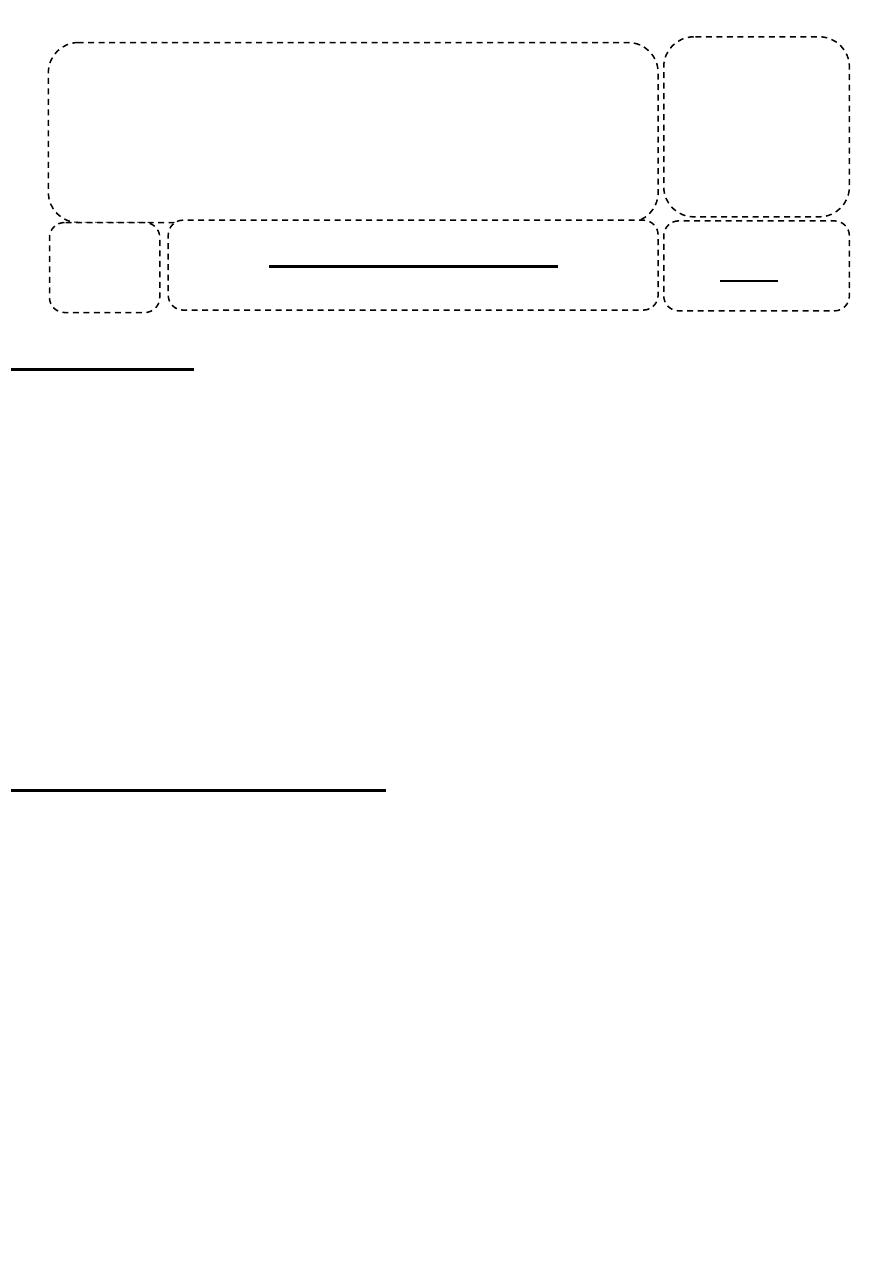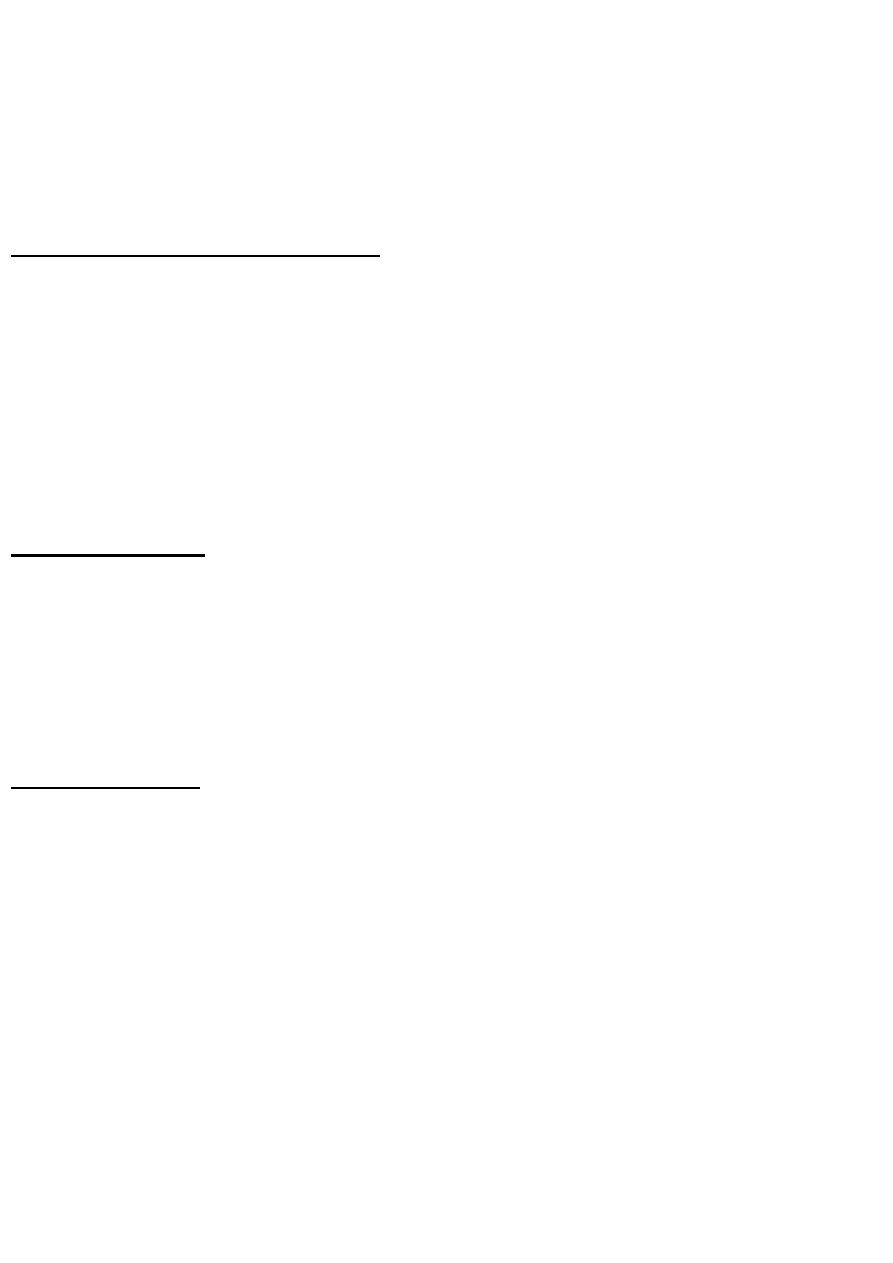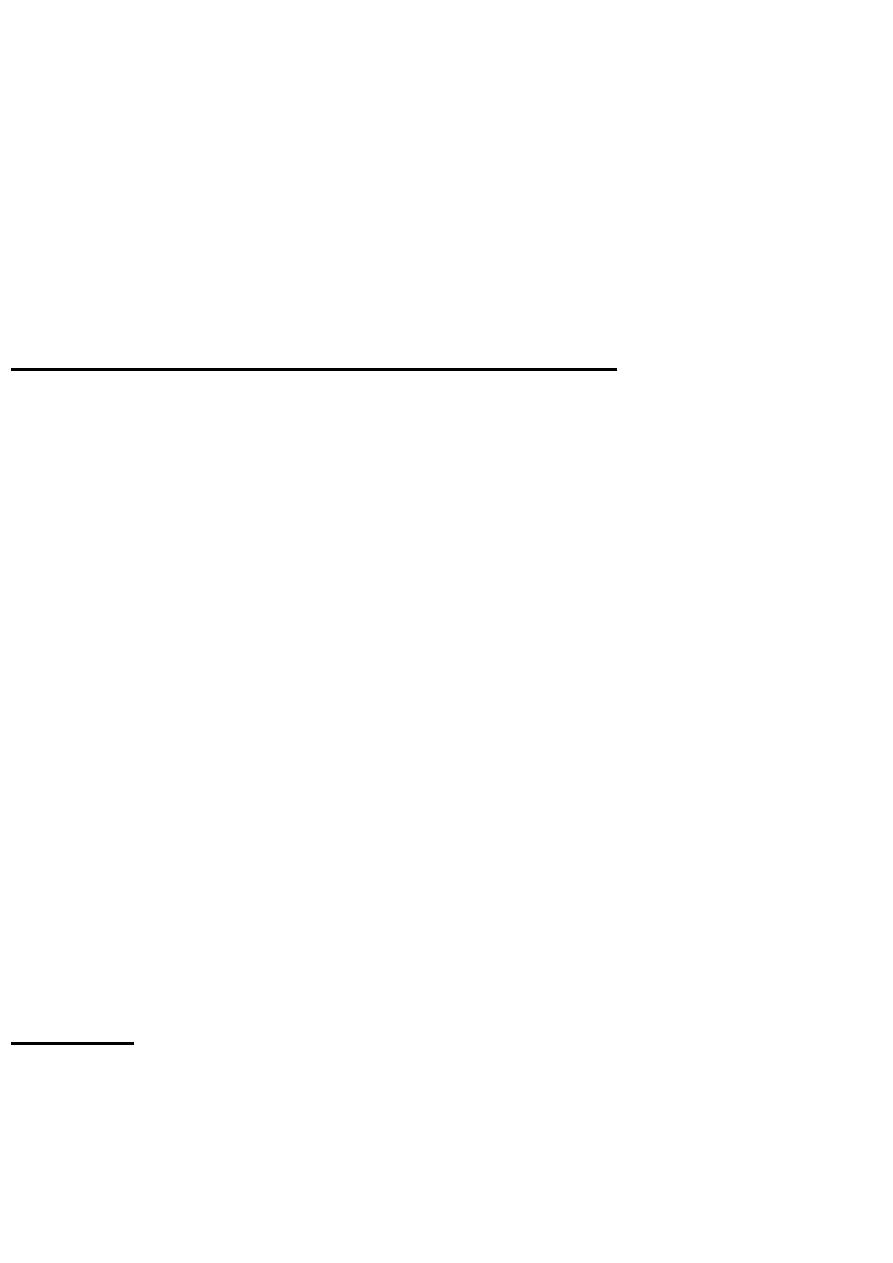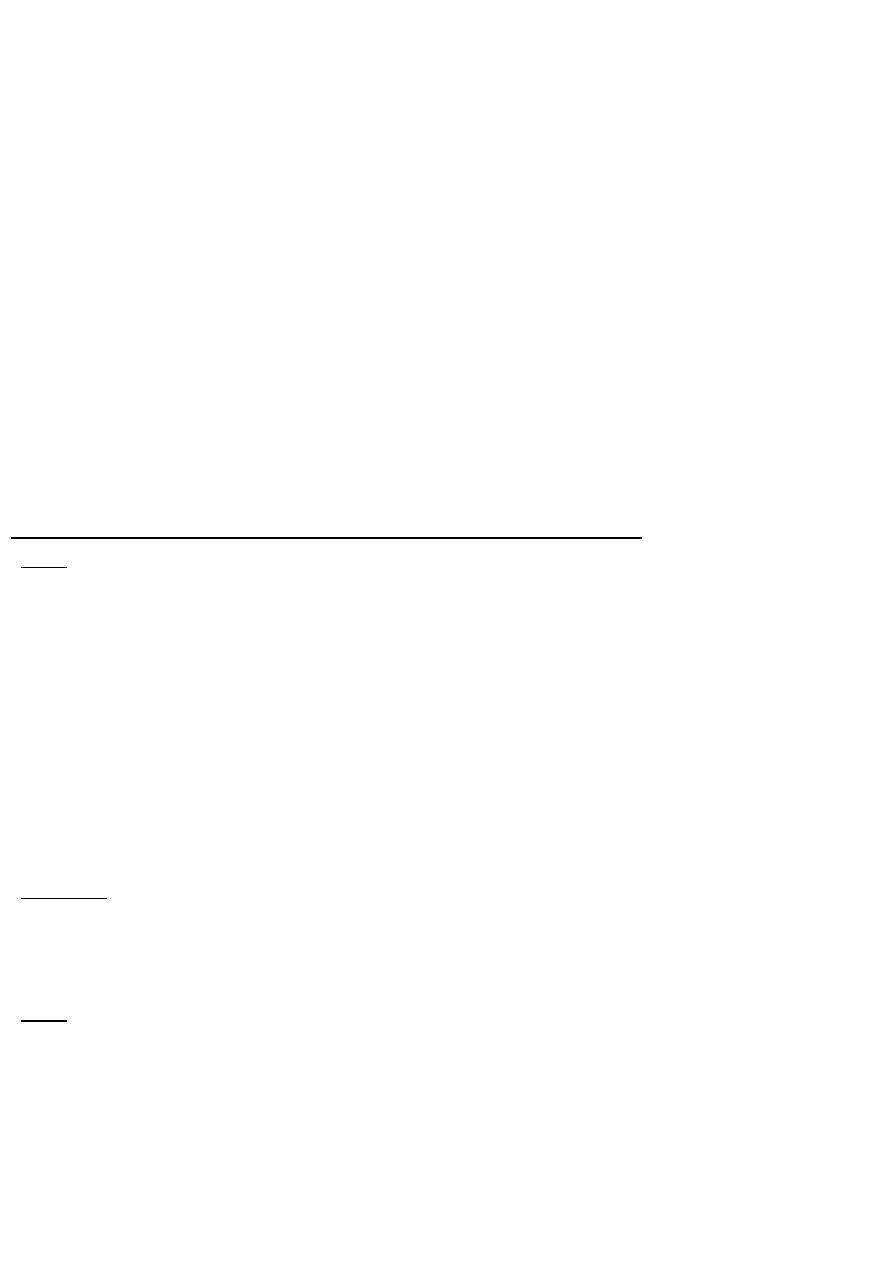
1
Classification:
1. Learning Disorders.
2. Motor Skills Disorders.
3. Communication Disorders.
4. Pervasive Developmental Disorders.
5. Attention –Deficit Disorders.
6. Disruptive Behavior Disorders.
7. Feeding & Eating Disorders.
8. Tic Disorders.
9. Elimination Disorders.
10. Other Disorders: like separation anxiety disorder, elective mutism ,etc…
11. Mood Disorders.
12. Substance Abuse.
specific developmental disorders
The term „specific developmental disorders' includes a variety of severe and persistent
difficulties in spoken language, spelling, reading, arithmetic, and motor function.
Skills are substantially below the expected level in terms of chronological age, measured
intelligence, and age-appropriate education and cannot be explained by any obvious
neurological disorder or any specific adverse psychosocial or family circumstances.
As the deficits are quite substantial, analogies were initially made to neurological concepts
and disorders such as word-blindness, alexia, aphasia, and apraxia, thus giving rise to the
notion that neurological deficits are the etiological basis of these disorders.
Since this could not be demonstrated, the next step was to define the disorders in a more
functional way, taking into account not only psychometric testing but also psychosocial
risk factors and the quality of schooling and education.
They include: learning disorders, motor skills disorders and communication disorders.
Psychiatry
Childhood disorders
Lecture
21
د.نصيف
Al-Madena
Copy

2
Learning disorder
They are diagnosed when achievement on standardized tests in reading, mathematics ,or
written expression is substantially below that expected for age schooling and level of
intelligence.
The learning disorders significantly interfere with academic achievement or everyday
activities.
They are also associated with low self esteem and deficits in social skills.
There are three types of learning disorders:
1. Reading disorder: defined as reading achievement that is below the expected level for a
child age, education & intelligence, that significantly interferes with academic success
or the daily activities that involve reading.
2. Mathematics disorder:
Characterized by impairment in understanding and solving of mathematical operations.
3. Disorder of written expression:
Characterized by writing skills that are significantly below the expected level for a
child‟s age ,intellectual capacity and education.
Motor skill disorder
This is also called developmental coordination disorders.
Its essential characteristic is a marked impairment in the development of motor
coordination.
It is characterized by imprecise or clumsy gross motor skill.
Communication disorder
This category includes disorders of speech & language.
They include:
1. Expressive language disorder:
the child skills in vocabulary ,the use of correct tenses ,the production of complex
sentences & the recall of words are below the expected level for his or her age &
intelligence.
2 . Mixed receptive –expressive language disorder:
child is impaired in both understanding and expressing language.
3 . Phonological disorder:
it is manifested by inappropriate or poor sound production.
4 . Stuttering or Stammering:

3
disturbance in the fluency and time patterning of speech that is inappropriate for the
patient‟s age.
Pervasive development disorder
These disorders are severe ,pervasive impairment in developmental areas ,such as social
interaction & communication ,or stereotyped behavior ,interests and activities.
The impairments are deviant in comparison to a person‟s mental or developmental level.
These disorders include:
1. Autistic disorder.
2. Rett‟s disorder.
3. Childhood disintegrative disorder.
4. Asperger‟s disorder.
Autistic disorder
Sometimes called “childhood autism, early infantile autism, Kanner‟s autism”.
Prevalence is 0.02-0.05 %.
In most cases it starts before the age of 36 months ( 3 years).
It is more frequent in boys.
The etiology of autistic disorder is not clear but there is more reliance on biological
causes.
Clinical features
1. Impairment in social interaction: lacking social smile, fail to show the usual relatedness to
their parents and other people, abnormal eye contact, …
2. Disturbance of communication &language.
3. Stereotyped behavior :the activities &play are rigid ,repetitive & monotonous. Ritualistic
and compulsive phenomena are common.
4. Unstability of mood.
5. Abnormal response to sensory stimuli( either exaggerated or decreased).
6. Other behavioral symptoms hyperkinesis or hypokinesis ,aggressive behavior ,temper
tantrums, self injurious behavior.
Prognosis is generally unfavorable .
The patient needs a complicated care which include:

4
1. Educational therapy.
2. Behavioral therapy.
3. Pharmacotherapy: no specific therapy is available. It can be only symptomatic like anti-
obsessive, antipsychotic and antiepileptic.
Attention – Deficit / Hyperactivity Disorder (ADHD)
This disorder is common ,appears more often in boys than in girls and causes disruption in
school and at home.
It is characterized by:
1. Features of hyperactivity: age-inappropriate hyperactivity which is mostly purposeless &
intolerable causing a lot of disturbance.
2. Poor attention span.
3. Impulsivity.
These symptoms should be present for at least 6 months before the diagnosis is made.
The symptoms should be present in more than one setting ( home, school, work).
And should be severe enough to cause significant impairment.
The symptoms of ADHD are present since the early childhood (before the age of 7 years).
The causes of ADHD are unknown ,but the disorder is predictably associated with a
variety of other disorders that affect the brain function ,such as learning disorders.
The suggested contributory factors to ADHD include prenatal toxic exposure,
prematurity, and prenatal mechanical insult to the fetal nervous system.
Food additives ,colorings, preservatives, and sugar have been suggested as possible
causes.
There is evidence for a genetic cause.
Treatment
1. Pharmacotherapy:
a. CNS stimulants: dextroamphetamine, methylphenidate, and pemoline.
b. Antidepressants.

5
2. Psychotherapy :
which include behavioral therapy , education of parents and teachers.
Disruptive behavior disorders
There are two types:
1. Oppositional defiant disorder:
Described as a recurrent pattern of negativistic, defiant, disobedient, and hostile behaviors
toward authority figures.
2. Conduct disorder:
A repetitive & persistent pattern of behavior in which the basic rights of others or major age-
appropriate societal norms or rules are violated.
Elimination disorders
1. Enuresis :
The repeated voiding of urine into clothes or bed ,whether, the voiding is involuntary or
intentional .The behavior must occur twice weekly for at least 3 months or must cause clinically
significant distress or impairment socially or academically. The child‟s age must be at least 5
years.
2. Encopresis:
Passing feces into inappropriate places whether the passage is involuntary or intentional. The
pattern must be present for at least 3 months ; the child‟s age must be at least 4 years.
Separation Anxiety Disorder
Defined as an excessive anxiety about separation from home or from those to whom the
child is attached.
This disorder must last for at least 4 weeks
Must begin before age of 18 years.
Must cause significant distress or impairment .
Separation anxiety requires the presence of at least three symptoms related to excessive
worry about separation from the major attachment figures .
The worries may take the form of refusal to go to school( school phobia, school refusal),
fears & distress upon separation ,repeated complaints of such physical symptoms like
headaches & stomach aches when separation is anticipated and night mares related to
separation issues.
The disorder is common and onset may occur during preschool years but is most common
in 7-8 years old.

6
Prevalence is 3-4% of all school children.
It occurs equally in males and females.
Treatment: behavioral therapy.
These cases were added by the students and not included in the lecture
Case1
A mother brings in her 3-year-old son to the pediatrician because she is concerned about his "poor
development." She says that she thinks her son's behavior is "very different from that of other children his
age." She says that ever since he was a toddler, he has seemed indifferent to her presence. She previously
attributed this to her son being "unique" compared to his two older sisters. However, she is increasingly
worried about her son because he does not play with his siblings or the neighborhood children who come to
visit, and she suspects that his speech development is limited. Upon examination, the child is spinning
continuously in a circle. When questions are asked of him, he makes no eye contact and responds with "A
house for the mouse." His physical appearance is otherwise normal. Which of the following is the most likely
diagnosis?
A.
Tourette's disorder
B. Schizotypal disorder
C. Avoidant personality disorder
D. Schizoid personality disorder
E. Autism
The correct answer is E
Explanation
Autism presents early in childhood, becoming evident before three years of age. The autistic child fails to
develop normal interactions with others and has impaired verbal and non-verbal communication. These
children often indulge in repetitive, stereotyped behavior and may babble and use strange words. They avoid
eye contact and have restricted interests.
Case2
An anxious mother brings her 2-year-old son to the physician for a new patient visit. She says that her son
was progressing well developmentally and meeting all milestones until 6 months ago. Since then, she and
her husband have noticed a marked restriction in the boy's activities. He keeps to himself, takes off clothes
that are not soft enough, speaks only when spoken to, and appears indifferent to the presence of others.
Attempts to engage the child in conversation are unsuccessful. He seems disinterested in toys and refuses
to make eye contact. While in the examination room, he starts banging his head against the wall. Given this
clinical presentation, which of the following is the most likely diagnosis?

7
A.
Attention deficit hyperactivity disorder
B. Autism spectrum disorder
C. Hearing impairment
D. Intellectual disability
E. Language disorder
The correct answer is B
Explanation
This patient's symptoms are consistent with autism spectrum disorder. In DSM-5, this condition is
Characterized by qualitative impairments in communication and social interaction. These patients also display
repetitive, stereotyped behavior and abnormal reactivity to sensory input. The condition may be
accompanied by intellectual impairment. Symptoms typically become evident during the second year of life.
